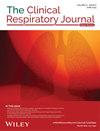In this study, we investigated the application value of bronchoalveolar lavage fluid (BALF) combined with targeted next-generation sequencing (tNGS) in the pathogen detection-based diagnosis of patients with lung infections.
A retrospective analysis was conducted on patients who underwent tracheoscopy and conventional microbiological tests (CMTs) on BALF, coupled with metagenomic next-generation sequencing (mNGS) or tNGS. This investigation encompassed individuals with suspected lung infections at Tianjin First Central Hospital from March 2023 to July 2023. Diagnostic rates based on pathogens detected via tNGS were compared with CMTs within the tNGS group. Additionally, diagnostic rates obtained through tNGS were compared with mNGS between the two groups.
The data of a total of 169 patients (78 in the tNGS group and 91 in the mNGS group) were collected, and 145 patients (67 in the tNGS group and 78 in the mNGS group) were finally diagnosed with lung infections. The comprehensive positive pathogen detection-based diagnosis rate for tNGS was 86.6%, with a single-pathogen lung infection diagnosis rate of 85.7% and a mixed-pathogen pulmonary infection diagnosis rate of 88.0%. In contrast, the overall positive pathogen detection-based diagnosis rate for CMTs was 38.8%, comprising a single-pathogen pulmonary infection diagnosis rate of 28.6% and a mixed-pathogen pulmonary infection diagnosis rate of 20.0%. The difference in positive diagnosis rate was deemed statistically significant (p < 0.05). In the mNGS group, the overall pathogen detection-based diagnosis rate was 89.7%, with a single-pathogen pulmonary infection diagnosis rate of 84.9%, and a 100% diagnosis rate for mixed-pathogen pulmonary infections. There was no statistically significant difference in the positive diagnosis rate when compared with the tNGS group (p > 0.05).
In patients with pulmonary infections, the diagnosis rate based on BALF pathogen detection using tNGS exceeded that of CMTs, showing no statistically significant difference compared to mNGS.



